Dit voorjaar lanceerde NIVEA een nieuwe lijn zonbeschermingsproducten: NIVEA SUN Sensitive. Voor volwassenen is er de Sensitive Immediate Protect lijn en voor kinderen de Protect & Play Sensitive lijn.
De Kids Protect & Play Sensitive lijn bevat drie producten: een zonnespray (van 200 of 300 ml), een zonnemelk (200 ml) en een roll-on (50 ml). Al deze zonbeschermingsproducten bevatten een zonbeschermingsfactor (SPF) van minimaal 50, zijn ongeparfumeerd en verrijkt met huidkalmerende ingrediënten.
De cosmeticaformules van deze drie zonbeschermingsproducten, komen grotendeels met elkaar overeen. Zo bieden alle drie de producten zonbescherming op basis van een combinatie van dezelfde zes UV-filters. Daarnaast zijn ze alle drie verrijkt met dezelfde vier huidverzorgende bestanddelen.
De NIVEAU SUN Kids Protect & Play Sensitive zonnebrandproducten zijn verkrijgbaar bij diverse (online) drogisterijen, zoals De Online Drogist, Drogist.nl en bij Bol.com.
Ingrediënten Kids Sensitive Protect & Play Zonnemelk SPF50
Aqua, Homosalate, Alcohol Denat., Butyl Methoxydibenzoylmethane, Bis-Ethylhexyloxyphenol Methoxyphenyl Triazine, Ethylhexyl Salicylate, Dibutyl Adipate, Ethylhexyl Triazone, Copernicia Cerifera Cera, Panthenol, Silica, VP/Hexadecene Copolymer, Phenylbenzimidazole Sulfonic Acid, Butylene Glycol Dicaprylate/Dicaprate, Glycerin, Glycyrrhiza Inflata Root Extract, Aloe Barbadensis Leaf Juice Powder, Tocopheryl Acetate, Tetrasodium Imino- disuccinate, Cellulose Gum, Distarch Phosphate, Sucrose Polystearate, Hydro- genated Polyisobutene, Sodium Stearoyl Glutamate, Polyglyceryl-4 Diisostearate/Polyhydroxystearate/Sebacate, Microcrystalline Cellulose, Acrylates/C10-30 Alkyl Acrylate Crosspolymer, Xanthan Gum, Sodium Hydroxide, Sodium Chloride, Caprylyl Glycol, Trisodium EDTA, Ethylhexylglycerin
De UV-filters in de SUN Kids Protect & Play Sensitive lijn
Homosalate (Homomenthyl Salicylate) is een chemische zonnefilter die gebruikt wordt om UVB-straling te absorberen. Helaas zijn er vraagtekens omtrent de veiligheid van Homosalate bij langdurig gebruik en aanwijzingen dat Homosalate mogelijk toxische effecten heeft op de organen en de hormoonhuishouding verstoord (Urek, 2013; Yazar & Gökçek, 2018).
Butyl Methoxydibenzoylmethane (Avobenzon/Parsol 1789) is een van de meest gebruikte chemische zonnefilter om UVA-straling te absorberen en heeft een uitstekend veiligheidsprofiel: het is niet giftig en veroorzaakt geen huidirritatie (Rastogi, 2002).
Bis-Ethylhexyloxyphenol Methoxyphenyl Triazine (Tinosorb S) is een relatief nieuwe chemische zonnefilter die zowel UVA- als UVB-straling absorbeert en tevens andere UV-filters stabiliseert, waaronder de in deze formule aanwezige Butyl Methoxydibenzoylmethane (Chatelain & Gabard, 2001). Voor zover bekend heeft Bis-Ethylhexyloxyphenol Methoxyphenyl Triazine heeft een uitstekend veiligheidsprofiel, maar data omtrent onder andere gezondheidseffecten van langdurig gebruik, ontbreken (SCCNFP, 1999).
Ethylhexyl Salicylate (Octyl Salicylate) is een in olie oplosbare chemische zonnefilter die gebruikt wordt om UVB-straling te absorberen. Ethylhexyl Salicylate heeft een uitstekend veiligheidsprofiel: het is niet schadelijk voor het DNA (geen genotoxiciteit) en heeft een laag risico op huidirritatie/contactallergie (tenzij men allergisch is voor salicylaten of afgeleiden daarvan). Net als geldt voor andere salicylaten, is Ethylhexyl Salicylate gemaakt van de exfoliërende stof salicylzuur. Hierdoor kan een te hoge concentratie leiden tot een huid die kwetsbaarder is voor UV-straling en is de maximale concentratie van Ethylhexyl Salicylate in cosmetica redelijk laag gesteld, op 5% (CIR, 2003; SCCNFP, 1998).
Ethylhexyl Triazone (Octyl Triazone) is een in olie oplosbare chemische zonnefilter afgeleid van PABA, die gebruikt wordt om UVB-straling te absorberen. Ethylhexyl Triazone wordt slechts in zeer beperkte mate opgenomen door de huid, leidt zelden tot huidirritatie, veroorzaakt geen allergische reacties of sensibiliteit en er geen bewijs is voor eventuele (geno)toxische of carcinogene werking. Al met al dus een uitstekende zonnefilter (SCC, 1997).
Phenylbenzimidazole Sulfonic Acid (Ensuizole) is een in water oplosbare chemische zonnefilter die gebruikt wordt om zowel UVB-straling als korte UVA-straling te absorberen. Op basis van literatuuronderzoek van alle wetenschappelijke onderzoeken verricht naar Phenylbenzimidazole Sulfonic Acid, heeft de SCCNFP in 2006 bepaald dat deze UV-filter veilig is voor gebruik in cosmetica bij een maximale toegestane concentratie van 8%.
Ingrediënten Kids Sensitive Protect & Play Zonnespray/Triggerspray SPF50
Aqua, Homosalate, Alcohol Denat., Butyl Methoxydibenzoylmethane, Bis-Ethylhexyloxyphenol Methoxyphenyl Triazine, Ethylhexyl Salicylate, Dibutyl Adipate, Ethylhexyl Triazone, Copernicia Cerifera Cera, Panthenol, VP/Hexadecene Copolymer, Glycerin, Phenylbenzimidazole Sulfonic Acid, Tocopheryl Acetate, Aloe Barbadensis Leaf Juice Powder, Glycyrrhiza Inflata Root Extract, Tetrasodium Iminodisuccinate, Cellulose Gum, Butylene Glycol Dicaprylate/Dicaprate, Microcrystalline Cellulose, Xanthan Gum, Acrylates/C10-30 Alkyl Acrylate Crosspolymer, Sucrose Polystearate, Polyglyceryl-4 Diisostearate/Polyhydroxystearate/Sebacate, Hydrogenated Polyisobutene, Sodium Stearoyl Glutamate, Trisodium EDTA, Sodium Hydroxide, Sodium Chloride, Ethylhexylglycerin, Caprylyl Glycol
De huidverzorgende bestanddelen in de SUN Kids Protect & Play Sensitive lijn
De producten van de SUN Kids Protect & Play Sensitive lijn bevatten vier goede huidverzorgende bestanddelen.
Panthenol (pro-vitamine B5) is een stof die bij contact met de huid wordt omgezet in pantotheenzuur en een huidherstellende, kalmerende, anti-irriterende en hydraterende werking heeft.
Tocopheryl Acetate, een derivaat van vitamine E, heeft beperkte anticarcinogene, fotoprotectieve (zonbeschermende) en huidbarrière herstellende eigenschappen heeft.
Aloe Barbadensis Leaf Juice Powder is het extract van de gel van de bladeren van Aloë vera. Aloë Vera is een uitstekend en veilig hydraterend bestanddeel dat tevens een huidherstellende en anti-irriterende werking heeft (Eshun & He, 2004; CIR, 2007).
Glycyrrhiza Inflata Root Extract (ook wel Licochalcone A genoemd) is extract uit zoethoutwortel dat een ontstekingsremmende en antimicrobiële werking heeft, en hierdoor helpt erytheem (roodheid) en hyperpigmentatie te verminderen (Saeedi et al., 2003; Kolbe et al., 2006; Weber et al., 2006; Schoelermann et al., 2016a, 2016b; Sulzberger et al., 2016). Zoethoutwortelextract is een veilig cosmetica-ingrediënt zolang ervoor gezorgd wordt dat het geen onzuiverheden bevat (CIR, 2008).
Ingrediënten NIVEA SUN Kids Protect & Play Sensitive roll-on SPF 50+
Aqua, Homosalate, Alcohol Denat., Butyl Methoxydibenzoylmethane, Bis-Ethylhexyloxyphenol Methoxyphenyl Triazine, Ethylhexyl Salicylate, Dibutyl Adipate, Ethylhexyl Triazone, Copernicia Cerifera Cera, Panthenol, VP/Hexadecene Copolymer, Glycerin, Phenylbenzimidazole Sulfonic Acid, Tocopheryl Acetate, Aloe Barbadensis Leaf Juice Powder, Glycyrrhiza Inflata Root Extract, Tetrasodium Iminodisuccinate, Cellulose Gum, Butylene Glycol Dicaprylate/Dicaprate, Microcrystalline Cellulose, Xanthan Gum, Acrylates/C10-30 Alkyl Acrylate Crosspolymer, Sucrose Polystearate, Polyglyceryl-4 Diisostearate/Polyhydroxystearate/Sebacate, Hydrogenated Polyisobutene, Sodium Stearoyl Glutamate, Trisodium EDTA, Sodium Hydroxide, Sodium Chloride, Ethylhexylglycerin, Caprylyl Glycol
Gebruikservaring met de SUN Kids Protect & Play Sensitive lijn
Belangrijke pluspunten aan Nivea’s nieuwe zonbeschermingsproducten voor kinderen, zijn het breedspectrum zonnefilter dat bescherming biedt tegen zowel UVA- als UVB-straling, de hoge zonbeschermingsfactor (SPF 50), feit dat het product parfumvrij is, een viertal uitstekende huidverzorgende producten bevat en tevens vrij is van controversiële conserveermiddelen als zoals parabenen, ftalaten of formaldehydedonoren.
Minpunten vind ik echter de (grote!) aanwezigheid van Homosalate, een zonnefilter met een twijfelachtig veiligheidsprofiel, het gebruik van een flinke dosis gedenatureerde alcohol (Alcohol Denat.) en het feit dat de producten hun zonbescherming puur op chemische in plaats van minerale zonnefilters bieden (klik hier voor het verschil tussen deze twee UV-filters).
NIVEA is een zeer populair, goed gepromoot en gemakkelijk verkrijgbaar cosmeticamerk. Deze nieuwe lijn aan zonbeschermingsproducten zal daarom ongetwijfeld gretig aftrek vinden de komende zomermaanden.
Vanwege bovenstaande minpunten, ben ik er zelf niet erg enthousiast over. Met name omdat er andere zonnebrandproducten voor kinderen beschikbaar zijn die wellicht wat minder bekend zijn, maar ook prima verkrijgbaar, niet (veel) duurder en (het belangrijkste!): deze minpunten niet bevatten.
Voor mijn eigen kinderen heb ik dit seizoen opnieuw gekozen voor hun ‘oude, vertrouwde’ te gebruiken: Suncover SPF 30 voor reguliere zonbescherming en de Lovea Bio Kids Spray voor de echt zonnige dagen. Deze ‘gebruikservaring’ is dus puur theoretisch van aard.
Heb jij al ervaring met dit product en denk je dat deze waardevol zou kunnen zijn voor andere lezers? Laat dan a.u.b. een reactie achter!
Bronnenlijst
Chatelain, E., & Gabard, B. (2001). Photostabilization of Butyl methoxydibenzoylmethane (Avobenzone) and Ethylhexyl methoxycinnamate by Bis‐ethylhexyloxyphenol methoxyphenyl triazine (Tinosorb S), a New UV Broadband Filter. Photochemistry and photobiology, 74(3), 401-406.
Cosmetic Ingredient Review (CIR) Expert Panel (2003). Safety assessment of Salicylic Acid, Butyloctyl Salicylate, Calcium Salicylate, C12-15 Alkyl Salicylate, Capryloyl Salicylic Acid, Hexyldodecyl Salicylate, Isocetyl Salicylate, Isodecyl Salicylate, Magnesium Salicylate, MEA-Salicylate, Ethylhexyl Salicylate, Potassium Salicylate, Methyl Salicylate, Myristyl Salicylate, Sodium Salicylate, TEA-Salicylate, and Tridecyl Salicylate. International Journal of Toxicology, 22, 1.
Cosmetic Ingredient Review (CIR) Expert Panel (2007). Final report on the safety assessment of Aloe Andongensis Extract, Aloe Andongensis Leaf Juice, Aloe Arborescens Leaf Extract, Aloe Arborescens Leaf Juice, Aloe Arborescens Leaf Protoplasts, Aloe Barbadensis Flower Extract, Aloe Barbadensis Leaf, Aloe Barbadensis Leaf Extract, Aloe Barbadensis Leaf Juice,aloe Barbadensis Leaf Polysaccharides, Aloe Barbadensis Leaf Water, Aloe Ferox Leaf Extract, Aloe Ferox Leaf Juice, and Aloe Ferox Leaf Juice Extract. Int J Toxicol, 26(2), 1-50.
Cosmetic Ingredient Review (CIR) Expert Panel (2008). Safety Assessment of Glycyrrhiza Glabra (Licorice) Rhizome/root, Glycyrrhiza Glabra (Licorice) Leaf Extract, Glycyrrhiza Glabra (Licorice) Root, Glycyrrhiza Glabra (Licorice) Root Extract, Glycyrrhiza Glabra (Licorice) Root Juice, Glycyrrhiza Glabra (Licorice) Root Powder, Glycyrrhiza Glabra (Licorice) Root Water, Glycyrrhiza Inflata Root Extract, and Glycyrrhiza Uralensis (Licorice) Root Extract.
Eshun, K., & He, Q. (2004). Aloe vera: a valuable ingredient for the food, pharmaceutical and cosmetic industries – a review. Critical reviews in food science and nutrition, 44(2), 91-96.
Kolbe, L., Immeyer, J., Batzer, J., Wensorra, U., tom Dieck, K., Mundt, C., … & Wenck, H. (2006). Anti-inflammatory efficacy of Licochalcone A: correlation of clinical potency and in vitro effects. Archives of dermatological research, 298(1), 23-30.
Rastogi, S. C. (2002). UV filters in sunscreen products − a survey. Contact Dermatitis, 46(6), 348-351.
Saeedi, M., Morteza‐Semnani, K., & Ghoreishi, M. R. (2003). The treatment of atopic dermatitis with licorice gel. Journal of Dermatological Treatment, 14(3), 153-157.
SCC (1997). Opinion of the Scientific Committee on Cosmetology concerning 2,4,6-Trianilino-(p-carbo-2‘-ethylhexyl-1‘-oxi)-1,3,5-triazine. Opinion adopted by the plenary session of the SCC of 24 June 1997.
SCCNFP (1998). Opinion of the Scientific Committee on Cosmetic and Non-food Products Intended for Consumers concerning 2-ethylhexyl salicylate. Opinion adopted by the plenary session of the SCCNFP of 21 January 1998.
SCCNFP (1999). Opinion on the Scientific Committee on Cosmetic Products and Non-Food Products intended for consumers concerning 2,4-BIS-{[4-(2-Ethyl-Hexyloxy)-2-Hydroxy]-Phenyl}-6-(4-Methoxyphenyl)-(1,3,5)-Triazine. Colipa n° S81. Adopted by the plenary session of the SCCNFP of 17 February 1999.
SCCNFP (2006). Opinion concerning phenylbenzimidazole sufonic acid and its salts. Opinion: European Commission – The Scientfic Committee on Cosmetic Products and Non-Food Products Intended for Consumers.
Schoelermann, A. M., Weber, T. M., Arrowitz, C., Rizer, R. L., Qian, K., & Babcock, M. (2016a). Skin compatibility and efficacy of a cosmetic skin care regimen with licochalcone A and 4‐t‐butylcyclohexanol in patients with rosacea subtype I. Journal of the European Academy of Dermatology and Venereology, 30(S1), 21-27.
Schoelermann, A. M., Jung, K. A., Buck, B., Grönniger, E., & Conzelmann, S. (2016b). Comparison of skin calming effects of cosmetic products containing 4‐t‐butylcyclohexanol or acetyl dipeptide‐1 cetyl ester on capsaicin‐induced facial stinging in volunteers with sensitive skin. Journal of the European Academy of Dermatology and Venereology, 30(S1), 18-20.
Sulzberger, M., Worthmann, A. C., Holtzmann, U., Buck, B., Jung, K. A., Schoelermann, A. M., … & Grönniger, E. (2016). Effective treatment for sensitive skin: 4‐t‐butylcyclohexanol and licochalcone A. Journal of the European Academy of Dermatology and Venereology, 30(S1), 9-17.
Urek, S. Y., Bilgin, M., & Halli, B. U. (2013). Toxicological Profile of Homosalate as Cosmetic Ingredients. Global Journal of Pathology and Microbiology, 1, 7-11.
Weber, T. M., Ceilley, R. I., Buerger, A., Kolbe, L., Trookman, N. S., Rizer, R. L., & Schoelermann, A. (2006). Skin tolerance, efficacy, and quality of life of patients with red facial skin using a skin care regimen containing Licochalcone A. Journal of cosmetic dermatology, 5(3), 227-232.
Yazar, S., & Gökçek, Y. (2018). Assessment of in vitro genotoxicity effect of homosalate in cosmetics. Marmara Pharmaceutical Journal, 21(3).

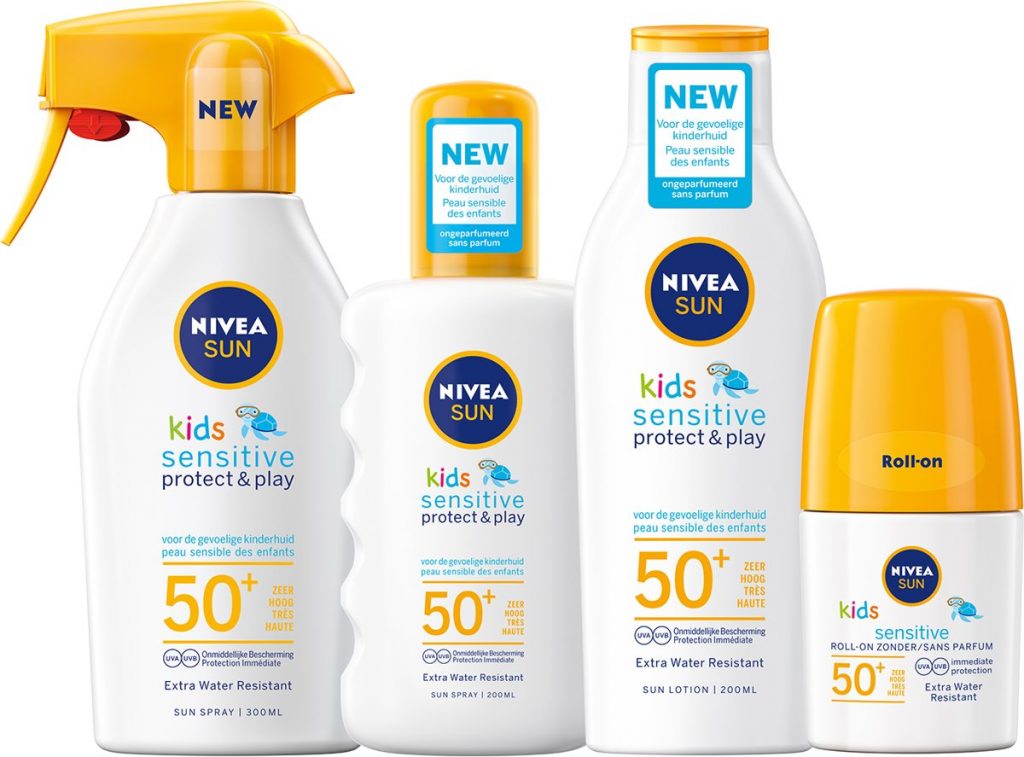
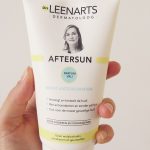
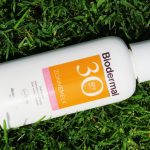
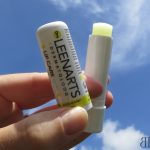
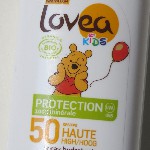

Review mijn reviews